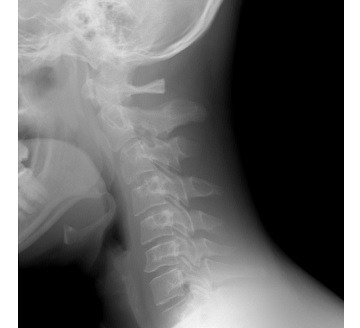 Whilst a number of studies have assessed the incidence of complications in association with posterior BMP-2 (bone morphogenetic protein-2) use, researchers from the International Spine Study Group noted that none focus on cervical deformity. Presented by Han Jo Kim at the 23rd International Meeting on Advanced Spinal Techniques (IMAST; 13-16 July, Washington, DC, USA), a new study from the group has found no significant increase in complications associated in cervical deformity surgery with posterior BMP-2, as compared to surgery without BMP.
Whilst a number of studies have assessed the incidence of complications in association with posterior BMP-2 (bone morphogenetic protein-2) use, researchers from the International Spine Study Group noted that none focus on cervical deformity. Presented by Han Jo Kim at the 23rd International Meeting on Advanced Spinal Techniques (IMAST; 13-16 July, Washington, DC, USA), a new study from the group has found no significant increase in complications associated in cervical deformity surgery with posterior BMP-2, as compared to surgery without BMP.
Kim explained the importance of studying BMP-2 use in cervical deformity surgery, “Where fusions are crossing the cervicothoracic junction more frequently, where instrumentation is smaller and [where] biologic time to fusion is unchanged, you could argue that BMP use could be beneficial to allow for earlier fusions, and for maintenance of correction.” Studying the safety of such usage, thus, is paramount to make sure that patients can receive the best care in these cases.
Using data from a prospective cervical deformity database from 2013–15, the researchers selected 100 patients matching at least one of their inclusion criteria; cervical kyphosis or scoliosis greater than 10 degrees, C2–7 sagittal vertical axis greater than four degrees, or horizontal gaze impairment with a chin-brow vertical angle greater than 25 degrees. Within this population, data from 53 patients who had been treated using BMP-2 were compared with data from 47 patients with no BMP-2 usage, by linear regression analysis and t-test (p<0.05). Correlations were assessed using the r2 statistic. The patients were followed for 7.6 months on average.
Statistical analysis revealed “that more BMP was used in older patients, accompanied with more allograft use…in addition, those who had BMP use tended to have a greater number of levels of fusion,” Kim explained. The average age in the BMP cohort was significantly greater (63.1 years) than in the non-BMP group (59.1 years, p=0.038). Forty-four patients in the BMP group received allograft, compared to only 28 in the no-BMP group (p=<0.001). The average number of levels of prior fusion was 9.6 in the BMP group, versus 8.3 in the non-BMP group (p=<0.002).
When considering the characteristics of recorded BMP usage itself, Kim noted that the team found that “on average, about 13.6mg BMP was utilised per person,” with 1.5mg used per level. Amongst the two cohorts, “there were no differences noted in any of the surgical variables between the two groups,” nor were any differences in pre- or postoperative radiographic corrections recorded.
The “crux” of the paper was a detailed analysis of complications observed up to 90 days. For this period, 95% of data was found to be complete. Sixty-eight patients experienced complications, totalling 101 complications overall (38 major, 34 minor). Revision surgery was required due to complication in fifteen patients. A wide range of complications (16 categories) were comprehensively noted by researchers, ranging from neurological complications (24 incidences) to vascular (two incidences). The severity—in terms of “major” or “minor”—was recorded for each complication. Thirteen neurological complications, for example, were categorised as “major”, with 11 considered “minor”.
Total complications were similar between the BMP and the non-BMP group. The total number of complications per person was found to be 1.35 (standard deviation 1.361) in the non-BMP group, and 1.17 in the BMP group (standard deviation 1.368; p=0.534). The researchers found 0.6 major complications per person in both groups, with standard deviations of 0.849 and 1.034 in the non-BMP and BMP group, respectively (p=0.966). Minor complication results were similar again, with 0.49 recorded per person in the no-BMP group (standard deviation 0.768) and 0.42 (standard deviation 0.75, p=0.677). No significant results were noted between the two groups at 30 days postop, or at 90 days.
Linear regression was performed in BMP patients, with BMP dose as an independant variable. Some significant results were noted when linear regression was performed, but the correlation coefficients were so small, Kim explained, that their clinical impact was “questionable”.
Outcomes were also found to be similar, with researchers finding no significant differences in outcomes between the two groups in Neck Disability Index, modified Japanese Orthopedic Association score, swallowing ability, EuroQuol 5D system and EuroQuol 5D visual analogue scale results.
Kim concluded by highlighting that whilst no increased rates of complication were noted along with posterior BMP use in the treatment of cervical deformity, “we are still yet to see whether or not this will translate into fusion rates.”













